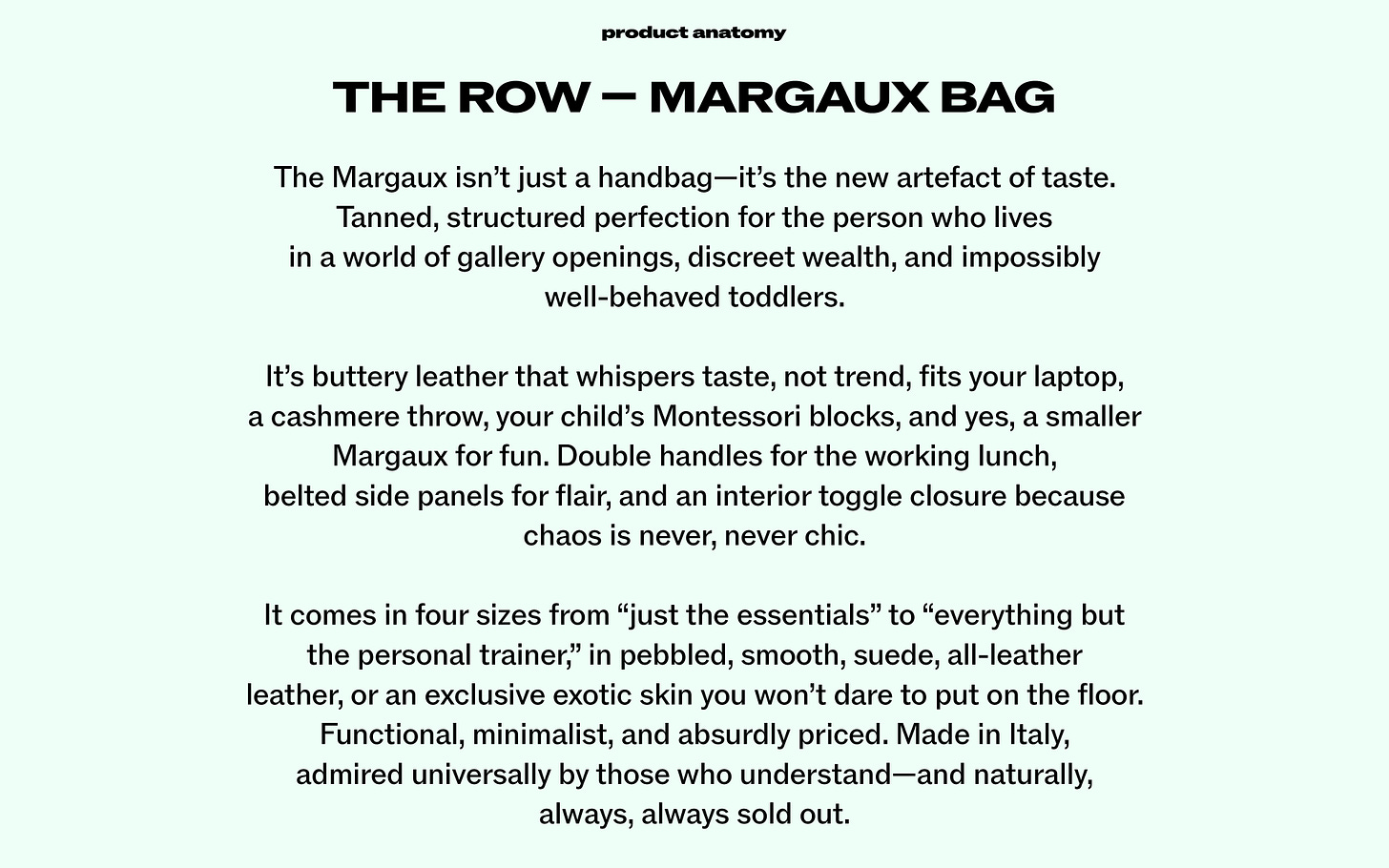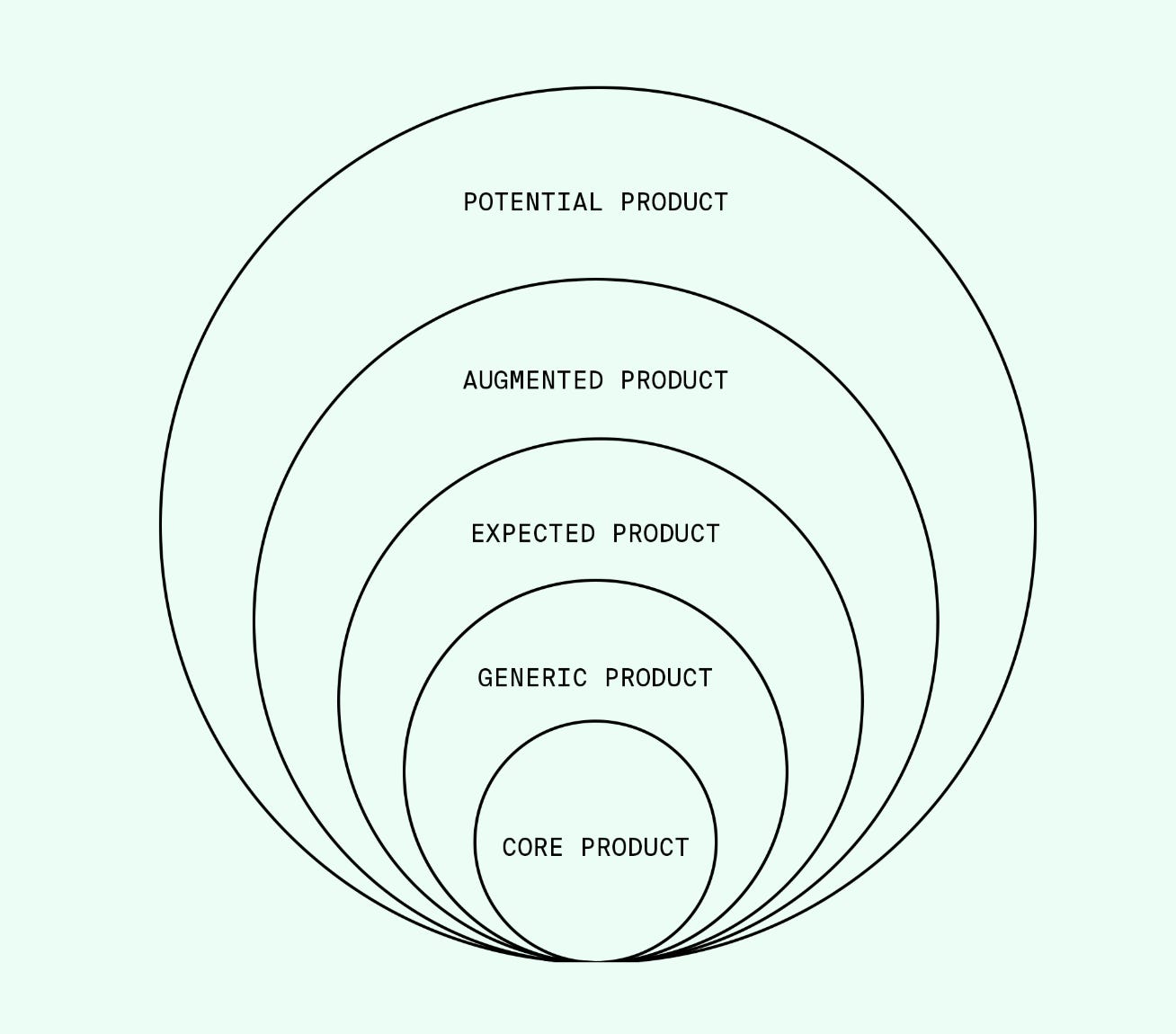How The Row Created the Ultimate It Bag
'Product Anatomy’ dissects the strategies behind the rise of the world’s most in-demand products.
Product Anatomy is a new, monthly series by insights brand Dot Dot Dot and Lyst—the world’s most intelligent fashion shopping platform—that examines the strategies behind fashion’s most buzzworthy products.

Behind every “overnight success” is a years-long master plan, a bit of luck, and the calculated foresight to strike when culture is ready.
Glossy magazines, trend forecasters, and a rising army of self-proclaimed social media “experts” would have you believe otherwise. They’re quick to turn a celebrity sighting into the next big thing, casting it as a phenomenon with no deeper thought.
But for many of these publications—old and new—the true intent lies elsewhere: fueling a cycle of follow-up content filled with affiliate-linked lookalikes and knockoffs, strategically placed to cash in on the buzz—as seen here, here, here, and here.
Or perhaps, it’s just the hope of striking viral gold. This churn perpetuates the illusion that these outlets still control what consumers buy, where they buy it, and when.
We leave the quick hits to them and decide to look just that bit deeper. Our Product Anatomy series, therefore, is a love letter to exceptional design and intention—an attempt to uncover the real stories behind some of the world’s most in-demand products that are often boiled down to nothing more than fleeting trends, rather than future icons.
These products are not flashes in the pan. They’re meticulously designed, crafted, and brilliantly marketed (or lack thereof) with one goal: to stand out among hundreds of thousands of competitor products. And they do.
There’s no product which has broken into the industry at the highest level quite like the Margaux handbag, which Lyst (later widely amplified by Vogue) called “a modern heirloom in the making.” Precisely.
What Even Is ‘The Margaux’?
Derived from the French name for ‘pearl’, the Margaux is the crown jewel of New York-based ultra luxury label The Row—founded by the Olsen twins and was quietly introduced in 2018 in a variety of “I don’t need to flex, I’ve already won” colorways. The bag, which comes in four signature sizes 10, 12, 15, and 17 inches, has been a staple in almost every seasonal collection the brand has launched since.
And yet it took six years before it had its big mainstream break. Why?
How We Dissect
To fully grasp the Margaux's success, we've adopted a comprehensive approach—leveraging exclusive data from Lyst (a custom Product Anatomy algorithm that analyzes search volume, demand, engagement, and sales), conversations with experts who know the product, its demand, and its cultural cache better than we do, field research, and, of course, Kotler’s Five Product Levels framework.
This model provides a structured lens through which we can dissect the Margaux’s value, from its core utility to the augmented features that solidify its status as a lasting icon.
The goal isn’t just to marvel at the Margaux’s rise but to break it down—to analyze its design, marketing, and cultural resonance and reveal how all these factors align to create a product that transcends trends.





